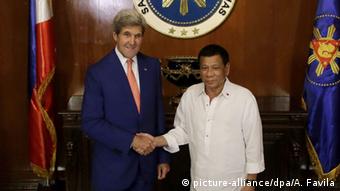.svg/2000px-World_Trade_Organization_(logo_and_wordmark).svg.png)
Can the US Still Make Trade Regulations?
There are not only many different kinds of U.S. trade protections, but the methods of these protections exceed reasonable limits, often completely ignoring the regulations of the WTO. On May 18 of this year, the U.S. Department of Commerce announced its final decision to raise the dual tax rate on Chinese cold-rolled steel up to 522.03 percent. WTO regulations clearly stipulate that you can’t oppose dumping and subsidies of a non-market economy nation. Doesn’t the U.S. deny China’s status as a market economy? Yet, as before, the U.S. is both anti-dumping and anti-subsidy. The home page on the official website of the U.S. Department of Commerce’s International Trade Administration prominently announces the trends in steel import quantity, including the changes in imports from various countries. Its principle is to not allow steel imports to increase in order to protect U.S. manufacturers; WTO regulations say otherwise.
The U.S. has always advertised itself as a supporter of free trade, and has never stopped attacking other countries, particularly China, for distorting trade. This criticism is directed at the wrong country and instead should be directed at the U.S. itself. In 2002, the W. Bush administration complied with the requests of U.S. steel companies and implemented additional taxes on steel products. This action led to all the major steel exporting countries to appeal to the WTO, which then ruled against the U.S. Soon after, the U.S. government repealed these additional taxes, but the U.S. still won nearly three years for its domestic steel industry to change its deficit to a surplus. However, this kind of vicious protectionism has consequences; now U.S. steel is even less competitive. These consequences go so far as to leave no option but to adopt even more blatant and direct protectionist policies.
According to the most recent WTO report, the growth rate in world trade has been lower than the GDP growth rate over many years. There is reason to be worried that trade protectionism will strangle the already weak economic recovery. But it seems as if the U.S. doesn’t actually care that much. The Republican Party’s presidential candidate, Donald Trump, takes this attitude even further. He has indicated in the past that he would levy a 45 percent tax on all Chinese goods and that he is in no way afraid of fighting a trade war. He thinks that ever since China entered the WTO it has gotten off easy, while the U.S. forfeited a large number of jobs. Trump probably has not done his own research on the statistics from the Department of Commerce. Those statistics clearly indicate that from 2000 to 2015, U.S. imports from China have had a cumulative increase of 383 percent and U.S. exports to China have had a cumulative increase of 614.2 percent. Who is it really taking advantage of the other? As for levying a 45 percent tax on all Chinese merchandise, if Trump is elected, there is a high possibility that he will be incapable of actually pushing it. If he does, I’m afraid the probability that it will pass Congress is zero. And even if the tax passes and is implemented, what’s to stop China from conversely implementing a high tariff on all American goods? It seems like their memory is not very good. In 1930, following the notorious Smoot-Hawley Tariff Act, tariffs were raised substantially on the import of 890 different kinds of merchandise. By 1932, the average tariff rate was 53.2 percent, which very quickly led to intense counter moves from Canada, Great Britain, France and Germany. The result was that from 1929 to 1933, U.S. imports withered to 66 percent of what they were, exports dropped 69 percent and GDP decreased by 50 percent. Total global trade declined by 66 percent, which enormously aggravated the global nature of the Great Depression. Does the U.S. really want to go through that again?
Obama has repeated over and over that the world cannot allow a country like China to formulate commercial trade regulations. Is the U.S. able to do it? The U.S. is engrossed in an even more intense protectionist atmosphere; what rules could it possibly set? If nothing else, these rules would, out of necessity, be favorable for the U.S. and show complete disregard for others, no matter how large the losses. But the world does not have this kind of regulation. If things continue how they are, I’m afraid that the U.S. will not even be able to participate in the formulation of trade regulations, let alone take the lead.
One need not look too far back in history for a clear warning. The lessons of the Great Depression in the 1930s must keep us from making the same mistake. On the eve of the G20 meeting, as the world’s two largest economies and trade nations, the U.S. and China must join forces and fight trade protectionism together; not only to avoid an increase in world economic hardship, but also to make a proper contribution to their own sustainable development.
The author is the deputy director and an advanced researcher at the Center for China and Globalization.


